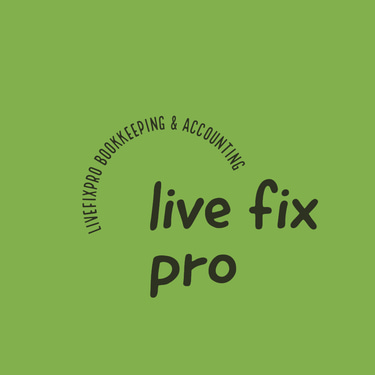what is bookkeeping? how is it done correctly using QuickBooks software?
what is bookkeeping? how is it done correctly using QuickBooks software?



QUESTION- what is bookkeeping? how is it done correctly using QuickBooks software?****************************************************************ANSWER-
Bookkeeping is the process of recording and organizing financial transactions of a business or organization. It involves systematically keeping track of all financial activities, such as sales, purchases, receipts, and payments, to ensure accurate and up-to-date financial records.
QuickBooks is accounting software that helps businesses manage their finances by providing tools for bookkeeping, invoicing, payroll, and other accounting tasks. Here's a general guide on how bookkeeping is done correctly using QuickBooks software:
Set Up Your QuickBooks Account:
Install and set up QuickBooks on your computer.
Create a company profile by entering essential information about your business.
Chart of Accounts:
Customize your Chart of Accounts to reflect the specific accounts relevant to your business. This includes assets, liabilities, equity, income, and expenses.
Connect Bank Accounts:
Link your business bank accounts and credit cards to QuickBooks. This allows the software to automatically download and categorize transactions.
Recording Transactions:
Manually record transactions that aren't automatically imported from your bank. This includes cash transactions, checks, and transactions from accounts that are not linked to QuickBooks.
Invoice and Sales Receipts:
Use QuickBooks to create and send invoices to customers. Record sales receipts when payments are received.
Expense Tracking:
Enter and categorize all business expenses, including bills, payments, and receipts. QuickBooks allows you to attach receipts to transactions for documentation.
Reconciliation:
Regularly reconcile your bank statements with QuickBooks to ensure that all transactions are accurately recorded. This helps identify any discrepancies or errors.
Payroll Processing:
If applicable, use QuickBooks to process payroll, including salary and tax calculations. QuickBooks offers payroll features to automate these tasks.
Financial Reporting:
Utilize QuickBooks to generate various financial reports such as Profit and Loss statements, Balance Sheets, and Cash Flow statements. These reports provide insights into the financial health of your business.
Backup and Security:
Regularly back up your QuickBooks data to prevent data loss. Implement security measures to protect sensitive financial information.
Stay Updated:
Keep your QuickBooks software updated to ensure you have the latest features, bug fixes, and security patches.
It's important to note that the above steps are a simplified guide, and the specific process may vary depending on your business needs and the version of QuickBooks you are using. Consider consulting with a professional accountant or bookkeeper for more tailored guidance based on your specific business requirements.
QuickBooks support or consulting with an IT professional can be beneficial or Alternatively best option is to visit www.livefixpro.com
Introducing LiveFixPro Services:
Your Premier Partner for Seamless Bookkeeping and Accounting Services, with Specialized QuickBooks Support & QuickBooks Consulting services.
